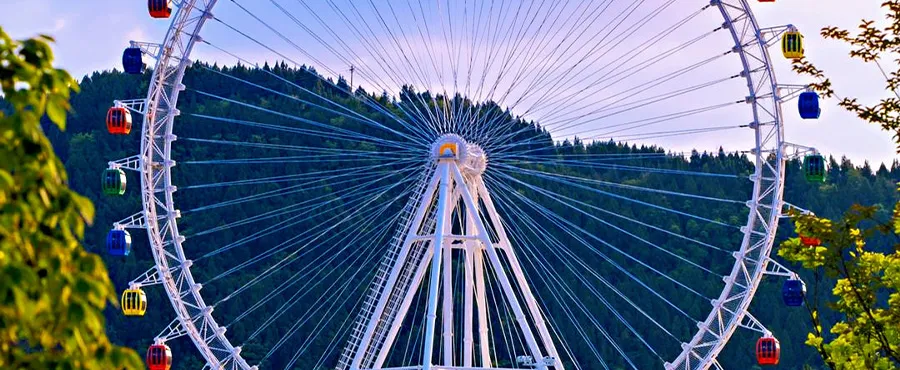- Albanian
- Arabic
- Belarusian
- Bengali
- Czech
- English
- French
- German
- Hebrew
- Hungarian
- Indonesian
- irish
- Italian
- Japanese
- kazakh
- Persian
- Russian
- Thai
- Uzbek
- Vietnamese
rail coaster
The Thrill of the Rail Coaster A Journey Through Time and Technology
There is something undeniably exhilarating about the thrill of a rail coaster. These metal contraptions, spiraling and twisting through the air, have captivated the hearts of thrill-seekers for over a century. From their humble beginnings to the modern-day engineering marvels they are today, rail coasters have evolved tremendously, offering riders an experience filled with excitement, adrenaline, and sheer joy.
The origin of the roller coaster dates back to the early 17th century in Russia, where wooden sleds would ride down snow-covered hills. These early prototypes paved the way for the first man-made rail coasters, which emerged in France in the late 18th century. Known as Les Montagnes Russes, or Russian Mountains, these rides were simple wooden track structures that provided a sense of thrill without the speed we expect from today's coasters.
As the 19th century progressed, America took the initiative to develop rail coasters further, introducing innovations that would drastically change the amusement park landscape. The first recorded American roller coaster, the Switchback Railway, opened in 1884 at Coney Island, New York. With a maximum height of just six feet, it was a far cry from the towering coasters we see today, but it marked the beginning of a new era in entertainment.
The invention of the chain lift mechanism in the early 20th century allowed for greater heights and speeds. Coasters began to ascend to dizzying heights, creating a new level of thrill for riders. The development of steel tracks in the 1950s further revolutionized the industry, allowing for smoother rides with more intricate designs. Steel coasters could twist, turn, and drop like their wooden counterparts while providing a level of comfort that wooden coasters could not match.
rail coaster

Today's rail coasters are masterpieces of engineering. Parks around the world boast record-breaking rides that reach heights exceeding 300 feet and speeds of over 70 miles per hour. Coasters like Kingda Ka in New Jersey and Formula Rossa in Abu Dhabi are perfect examples of how technology has transformed the thrill-seeking experience. These rides incorporate inversions, loops, and airtime hills that make the journey not just about speed but also about the sense of weightlessness and disorientation that riders crave.
Moreover, the experience of a rail coaster goes beyond just the ride itself; it is an entire sensory adventure. The anticipation builds as the train climbs the lift hill, the click-click-click of the chain track heightening the excitement. Riders often scream or cheer in unison as they plunge down the first drop, their bodies momentarily defying gravity as they fly through loops and twists. The rush of wind, the vibrant colors of the park, and the sounds of laughter and excitement all contribute to a thrilling atmosphere that cannot be replicated.
Environmental considerations have also become a part of the modern rail coaster's development. Amusement parks are increasingly focused on sustainable practices, from using energy-efficient systems to incorporating eco-friendly materials into their designs. As technology continues to evolve, we can expect rail coasters to become even more impressive while prioritizing their ecological footprint.
In conclusion, the rail coaster is more than just an amusement park ride; it is a symbol of innovation, excitement, and adventure. As we look to the future, the evolution of rail coasters will undoubtedly continue, providing generations of riders with the thrill and joy that these incredible machines have to offer. Whether soaring through the air or plunging down steep drops, the rail coaster remains an iconic element of entertainment that captures the thrill of the human spirit.
-
Flume Ride-Hebei Zhipao Amusement Equipment Manufacturing Co., Ltd.|Thrilling Water Attraction&Customizable DesignJul.30,2025
-
Flume Ride - Hebei Zhipao Amusement Equipment | Water Coaster, Thrilling DescentJul.30,2025
-
Flume Ride - Hebei Zhipao | Thrilling Water AttractionJul.30,2025
-
Flume Ride: Thrilling Water Attraction by Hebei Zhipao|Log Flume Manufacturers&Flume Ride DesignJul.30,2025
-
Flume Ride-Hebei Zhipao Amusement Equipment Manufacturing Co., Ltd.|Thrilling Water Coaster, Safe DesignJul.30,2025
-
Flume Ride-Hebei Zhipao Amusement Equipment Manufacturing Co., Ltd.|Thrilling Water Attraction, Safe DesignJul.30,2025
